Ridder Arena, unlike the Gopher men's rink next door and it's international sized 200' x 100' sheet of ice, has a NHL sized 200' x 85' sheet and seats 3,400 fans. It's the first, and was for ten years the only, arena built specifically for a women's program in the United States. It will be host to not only the WCHA playoffs this season, but the women's Frozen Four national championships as well, having hosted the finals twice before. One unique feature is that Ridder and Mariucci are connected by an underground tunnel, allowing the two arenas to share such things as a Zamboni! Their proximity and differing ice sheets allow teams to have the option of which size rink to practice on based on their particular opponent that week.
Ridder opened in 2002 and has hosted seven WCHA conference championships, the Minnesota State High School Girls Hockey Tournament as well as pre-tournament games for the men's 2009 IIHF Under-18 World Championships held in Fargo, North Dakota.
It's a very attractive arena, with an increasing number of displays, including carrying over the Mariucci Arena tradition of adding the players named to the national All-American Team to a mural in the arena.
For jersey fans, there is a timeline of jerseys, although incomplete, the grace the walls of Ridder Arena.
The Golden Gopher women's hockey team first took to the ice in 1997-98 and has won six regular season championships, four WCHA tournament titles and four national championships.
The Gophers have also had seven members of their program take part in the Olympics, six for the United States and one for Finland, who are commemorated on another wall of the arena.
Additionally, many Gophers players have skated in other international competitions for not only the USA and Finland, but also Canada, with those players highlighted with yet more jerseys on the wall.
Duluth, meanwhile, came into Friday's game with a ten game unbeaten streak, having won six games in a row. The Gophers would open the scoring when Becky Kortum came off the bench and took a pass behind the UMD defense, broke in shorthanded on Bulldogs goaltender Kyla Black and pulled off a move worthy of any NHL shootout when she slammed on the brakes, snowed the goalie, who had gone down in anticipation, and simply reached around Black and put the puck into the wide open net on the right side for her 12th goal of the season. The period ended 1-0 in favor of the Golden Gophers, yet Duluth led in shots on goal 9-8.
Amanda Kessel, brother of former Gopher and current Toronto Maple Leaf Phil Kessel, extended the Minnesota lead to 2-0 with her 35th goal of the season at 8:04 after a slick behind the back pass from Hannah Brandt.
Meanwhile, the Gopher defense kept the Bulldogs from getting any great scoring chances as the score remained 2-0 after 40 minutes.
While Duluth outshot Minnesota 9-7 for the period and 24-22 for the game, the majority of the shots were from long range or without much force on them, as the Minnesota defense, led by captain Megan Bozek, prevented the Bulldogs from generating any sustained pressure or many close in scoring chances.
Millica McMillen closed out the scoring with her 8th goal of the season with assist from Kessel and Davis to make the final score 5-0.
Finnish Olympian Noora Räty (pronounced RAH-too) got the shutout in goal for the Gophers, who clinched the WCHA regular season title with the victory. Räty's 37th career shutout game her 101 career wins for sole possession of the NCAA record and leaves her two shy of the shutout mark.
On Saturday afternoon, the Gophers won again, this time 6-2 after Duluth led 1-0 after the first period, only the third time Minnesota has trailed all season. Brandt and McMillen gave the Gophers a 2-1 lead after two, but Jenna McParland scored the first shorthanded goal Minnesota has given up all season to tie the score at 5:39 of third period.
Kessel then scored the game winner for Minnesota with her 37th of the year at 12:15 before the Gophers hit their stride with two more goals in a span of 1:45 and one more late one to seal their 36th consecutive victory and push their record to 28-0 for the season. Kessel leads the nation in scoring with 37 goals and 82 points, while teammate Brandt is second with 67.
With the victory, Minnesota clinched the WCHA regular season title, their seventh, and were awarded the league championship trophy following the game.
We find going to women's games very entertaining, as the skill level is impressive and the prices were very affordable, as an adult general admission ticket was $8 and our youth another $5. Ridder Arena is a very attractive venue and the sight lines were great with every seat close to the ice. Compare the $13 we spent to the $70 it would cost for two people to see a Gopher men's game next door, and the value is obvious.
The atmosphere is good too, as both nights there were over 3,000 in attendance, nearly filling the 3,500 seat arena, and the band was there to create the true college experience.
While Minnesota is running away with the race in the west, the next six teams in the national rankings are eastern clubs, Boston College, Boston University, Harvard, Cornell, Clarkson and Mercyhurst. The rest of the Top Ten are Wisconsin, North Dakota and Duluth, so regardless of where you are located, there should be a team near you worth checking out.
The one thing we would recommend though, is buying a program (we paid just $1 for a fact filled lineup card) to assist in identifying the players for reasons that became quite clear as the game progressed!
Today's featured jersey is a 2012-13 University of Minnesota Golden Gophers Noora Räty jersey. The women's programs in NCAA hockey allow designers the opportunity to have some fun, creating new and different styles from those worn by the men's programs, often with very successful results not so tightly bound by the tradition of the men's programs.
This particular style is a good example of that, retaining the tradition of the University's hockey tradition with the block "M" logo on the front and a similar to the men's, but different, treatment for the stripes on the shoulders, while adding a secondary "skating Goldy" logo to the shoulders that the men's program has never used. Overall, it creates a fun, unique jersey for the women's team, while maintaining the tradition of the hockey program as a whole.
In addition to now holding the NCAA record for wins and closing in on the shutout mark, Räty has quite a resume, having been named Finland's Rookie of the Year in 2006, Best Goaltender in both 2006 and 2007 as well as Finland's Best Women's Hockey Player in 2007 and 2008.
Internationally, she won bronze medals at the 2010 Olympics, the 2008, 2009 and 2011 World Championships, where she was named Best Goaltender at all three tournaments as well as the 2008 tournament MVP.
While with Minnesota, he has been named a Patty Kazmaier Award Finalist in both 2010 and 2011 and a 2010 All-American. She was named the 2010 WCHA Goaltending Champion and earned 2010 WCHA All-Rookie Team and 2010 and 2011 WCHA First Team honors.
It's not that we dislike gold jerseys as a rule, as we think the one pictured above with GOPHERS diagonally across the front is especially nice, but this particular one seems to have grouped all the design elements we hated about the original Nike Swift jerseys from 2006, such as the stripes on the arms that start and stop for no reason rather than running the full length of the arms, and then added in even more bad design ideas combined with poor color choices to create a really, really bad jersey not worthy of a team playing so well.

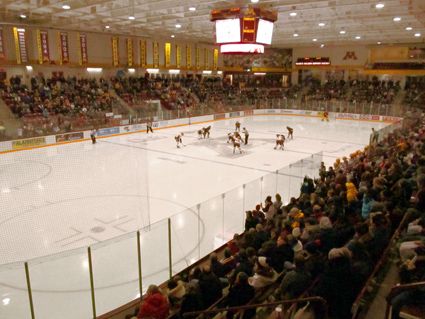

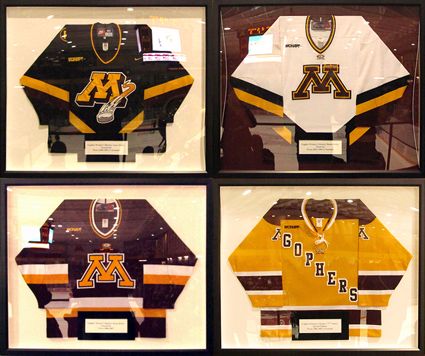
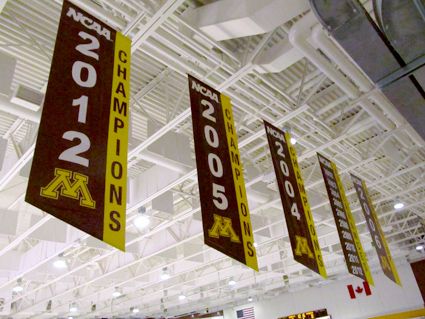
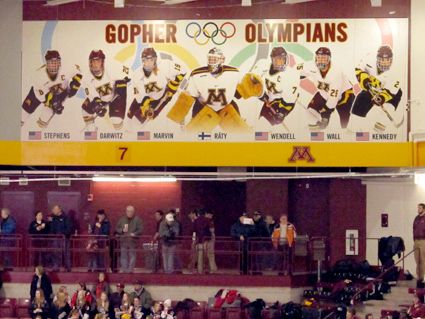

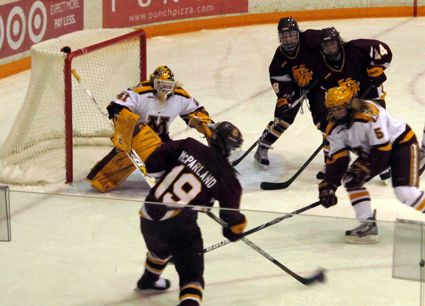
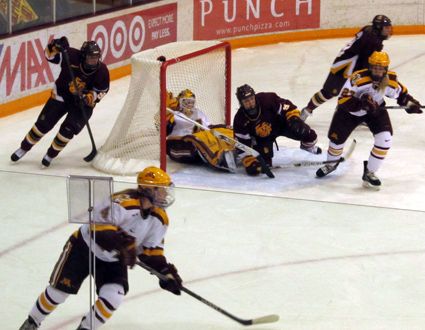
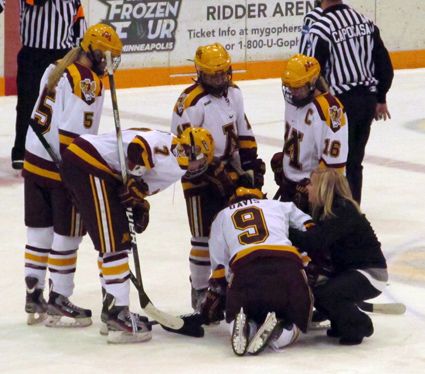
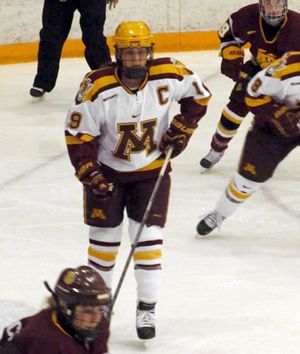
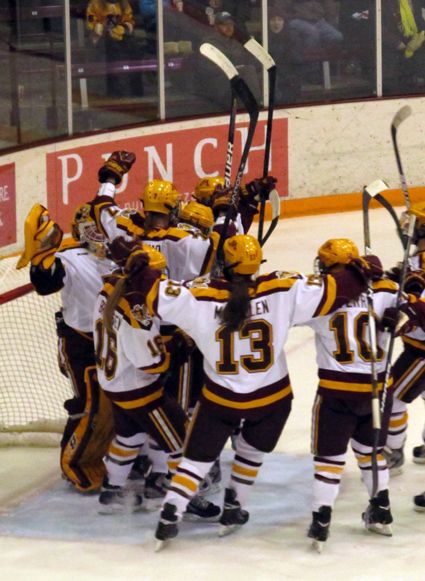
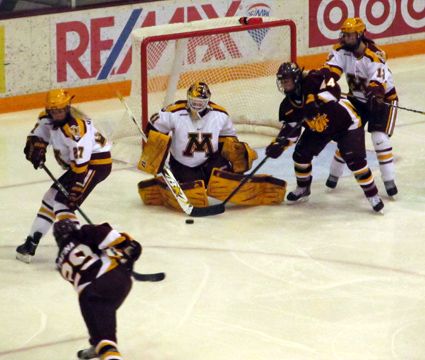
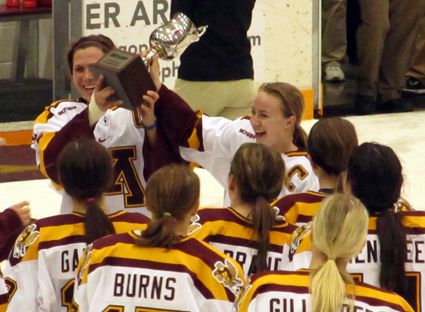

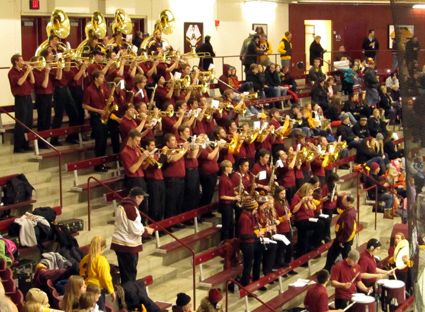
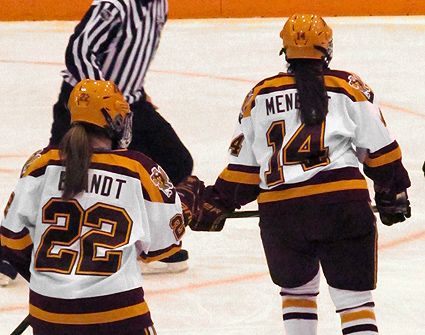
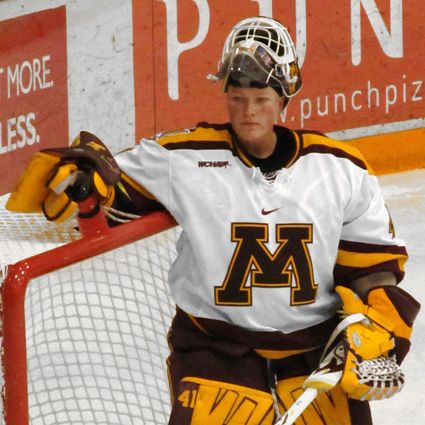
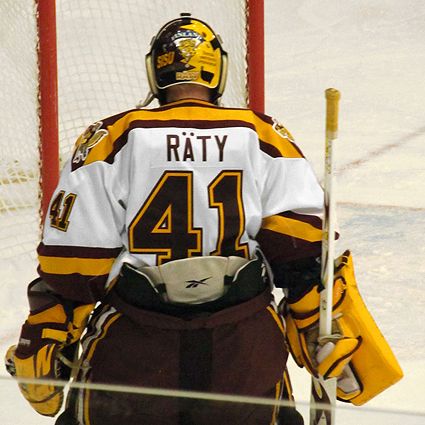
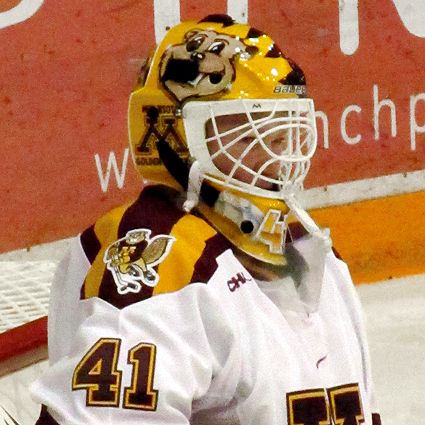

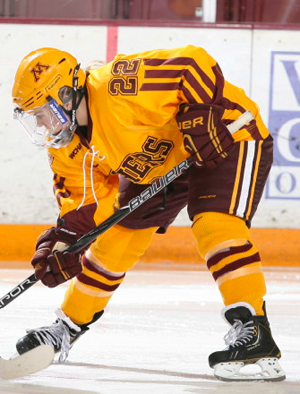
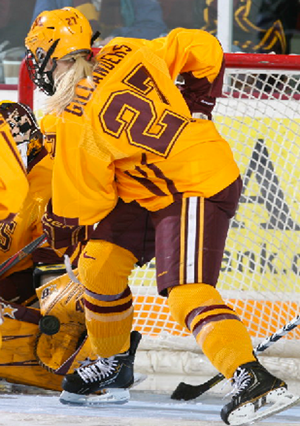










Heh, that's timely. I went to my first women's game this weekend too. Brown at Princeton, price of admission = $0.00. Princeton's Hobey Baker Arena = awesome ancient splendor of stone walls and wooden roof. I echo some of your comments about the gold jersey, name the the sleeve and side panel stripes, but I like the two-color combo here and its lack of white. This is hardly Islander-black-bad. I would say it is pretty average as far as current jersey stylings go.
ReplyDelete